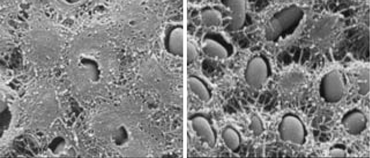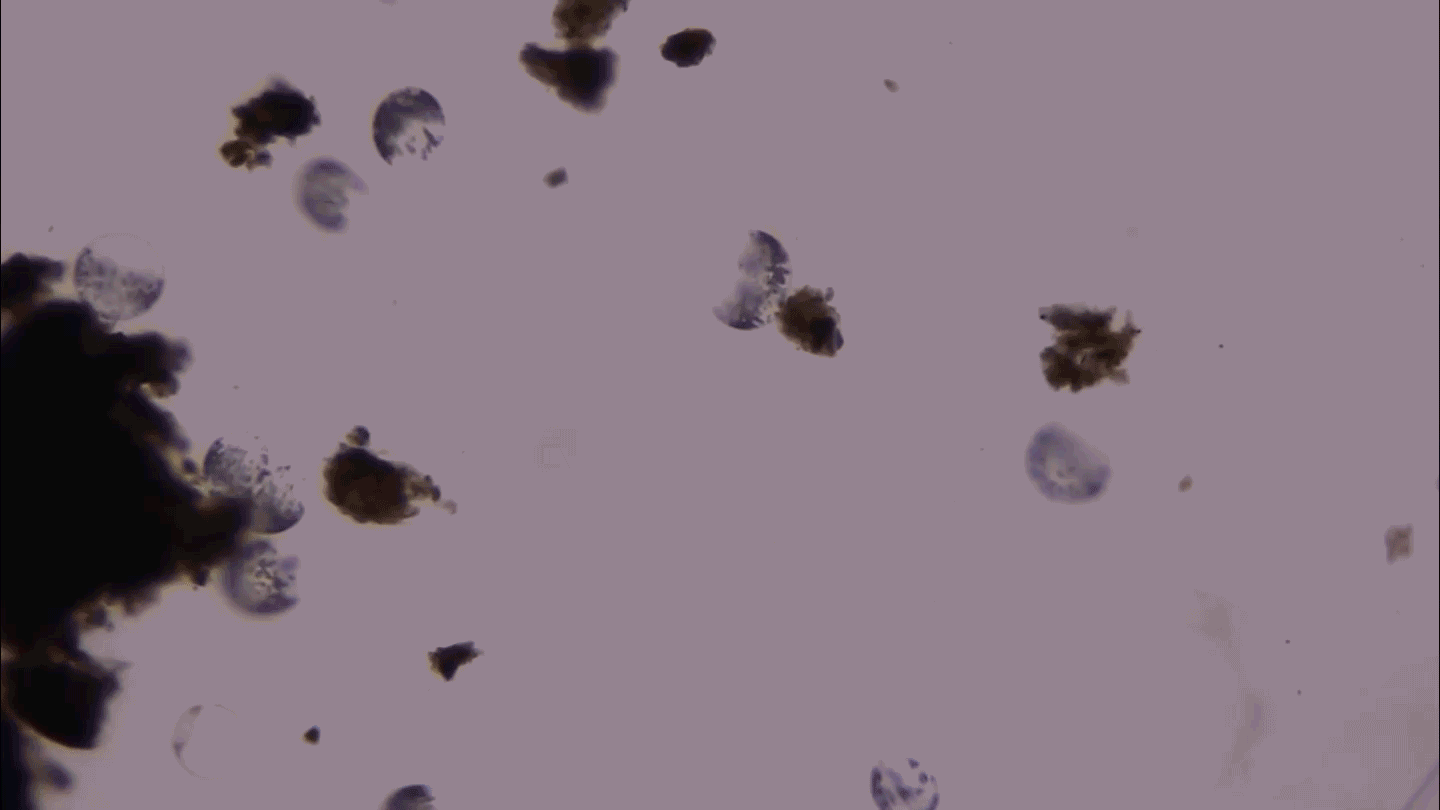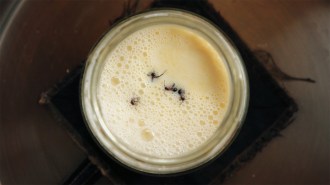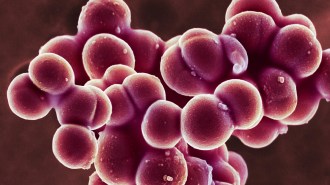
TANGLY TENDRILS This colony of E. coli bacteria gets its wrinkly look thanks to tendrils of cellulose that it uses to build a supertight, sticky web. A new view of microbes’ cellulose shows how it’s different from the kind found in plants.
L. Cegelski
To build resilient colonies, bacteria make a surprising tweak to a common substance found in cells.
A biochemical addition to the cellulose produced by E. coli and other species of bacteria lets them create colonies that are resistant to disruption, researchers report in the Jan. 19 Science. Called biofilms, these microbial colonies can form on medical devices or inside the body, leading to hard-to-treat infections that can resist antibiotics. Figuring out how to weaken these films by altering bacteria’s cellulose could lead to new treatments.
Cellulose is the most abundant natural polymer on the planet. It makes celery stringy and plants’ cell walls rigid. The basic structure of the substance is simple: a bunch of copies of the sugar glucose — the exact number can vary — strung together like beads on a string.
While the polymer is best associated with plants, some bacteria make cellulose, too. The microbes secrete it and use it to build scaffolding around cells that supports the growth of biofilms. In a biofilm, cellulose is like “the mortar to hold together all the bricks,” says study coauthor Lynette Cegelski, a chemical biologist at Stanford University.
When Cegelski and her colleagues used a technique called nuclear magnetic resonance spectroscopy to analyze the biofilm around samples of E. coli, the researchers got a surprise. The cellulose made by bacteria was different from the cellulose made by plants.
Instead of being only a string of glucose units, bacterial cellulose also had an appendage containing nitrogen and phosphorus. E. coli’s appendage add-on affects the way the bacteria form colonies, experiments show. Normally, bacterial cellulose spins into long tendrils that, along with a different kind of sticky, protein-based fiber, form basketlike structures that cradle individual bacteria and tie them together into an elastic web. But when the researchers genetically engineered the bacteria to produce unmodified cellulose, the cellulose formed shorter fibers. That made the biofilm matrix weaker. The resulting film also appeared less resistant to microorganisms that produce cellulose-destroying enzymes.
Other studies have looked at bacterial cellulose before. But nobody had realized that it was modified. That’s because a commonly used method for examining biofilms involves dissolving the materials in an acid at one step of the process, which breaks down this modification.
The new study also pins down the role of a gene that researchers knew was somehow involved in cellulose production in bacteria, but weren’t sure how. This gene gives instructions for an enzyme that attaches the appendage to the glucose chain after it’s produced, altering the cellulose just before it leaves the cell. Targeting the gene or enzyme responsible for this modification could eventually be a way to weaken biofilms, Cegelski says.
The process by which bacteria make cellulose and secrete it to build biofilms is already quite complex, regulated by more than a dozen different genes working together. Adding an enzyme that can “sneak into this machinery” and tack on an appendage makes the story even more complicated, says Jean-Marc Ghigo, a microbial geneticist at the Institut Pasteur in Paris, who wasn’t involved in the study. “I think it’s cool.”
Other species of bacteria, such as Salmonella, also produce the modified cellulose, Cegelski and her team found. She plans to do a wider survey of bacteria to figure out just how widespread it is.








